Pleurotus ostreatus – Winter Oysters

The Winter oyster mushroom (Pleurotus ostreatus) is the most commonly cultivated mushroom, but is also commonly found in the wild. Winter oysters, or Pearl oysters, can be identified by their tan cap, stubby off-center stem, and decurrent gills. Winter oysters tend to have a darker cap and grow larger than the summer oyster species (Pleurotus […]
Hydnum spp. – Hedgehogs
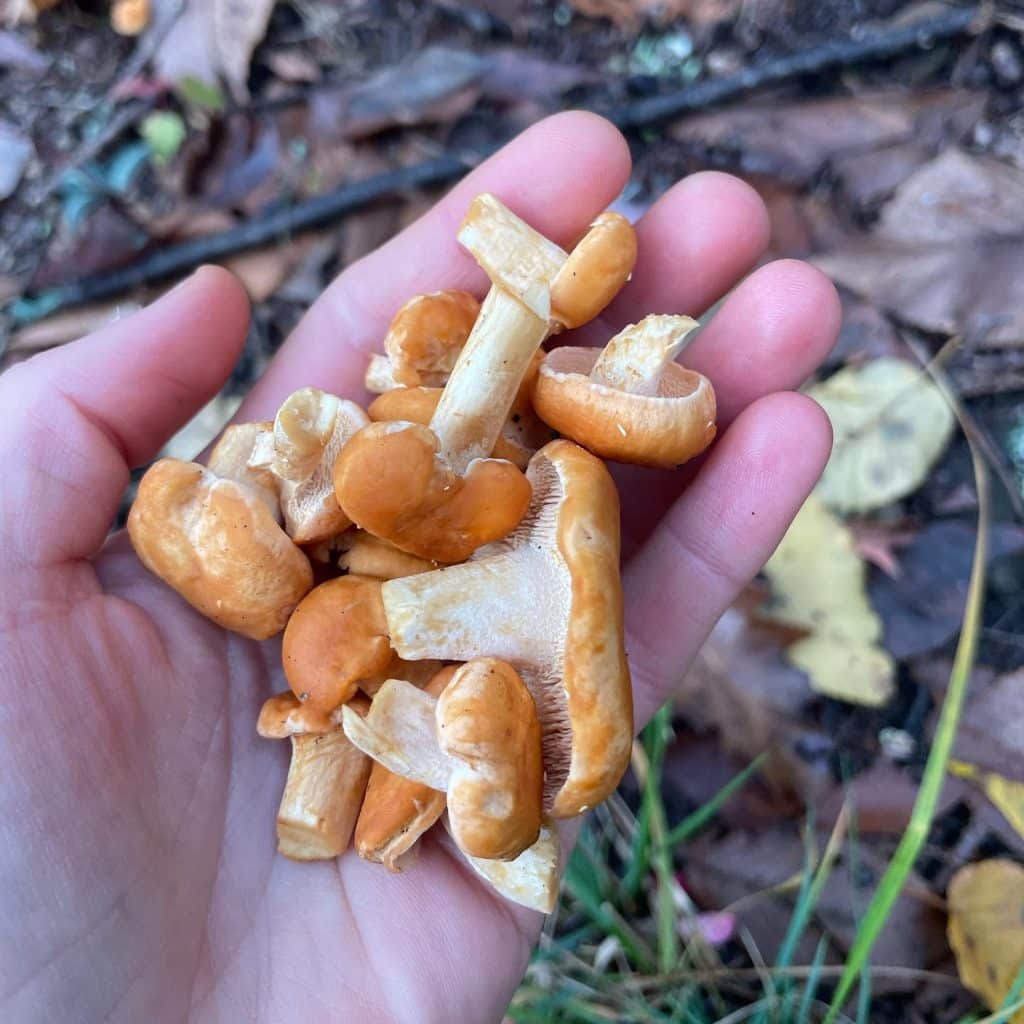
Hedgehogs (Hydnum spp.) are a group of 49 mushrooms in the Hydnum genus that are all considered edible. Hedgehogs can be found in New England from July-November. Hedgehogs are easily identified by their orange color and teeth under their cap. Hedgehogs can be found growing in groups in moss and leaf litter. They grow symbiotically […]
Fomitopsis betulina – Birch Polypore
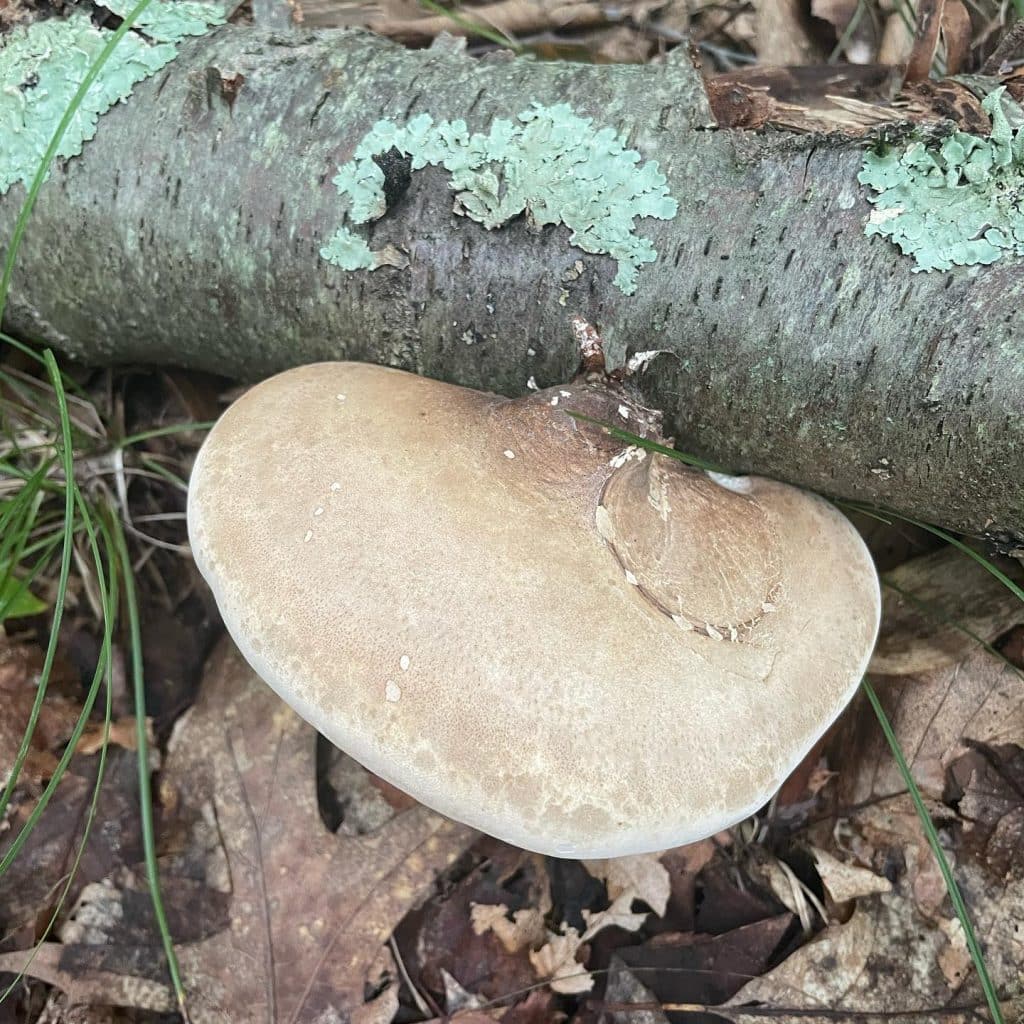
The Birch Polypore (Fomitopsis betulina) is a medicinal mushroom that has been used for thousands of years. The birch polypore was found on Otzi the iceman, whose body was found in the Italian alps from 5,000 years ago. It is thought that Otzi was using the mushroom to treat the intestinal parasites that he had. […]
Ischnoderma resinosum – Resinous Polypore

The Resinous polypore (Ischnoderma resinosum) is a saprobic fungus that can be found on fallen hardwoods from September until the first hard frost. The resinous polypore is thick and fleshy when young with a pale brown cap and thick white margins. The mushroom toughens and the cap becomes a darker brown with age. The cap […]
Entoloma abortivum – Shrimp of the Woods
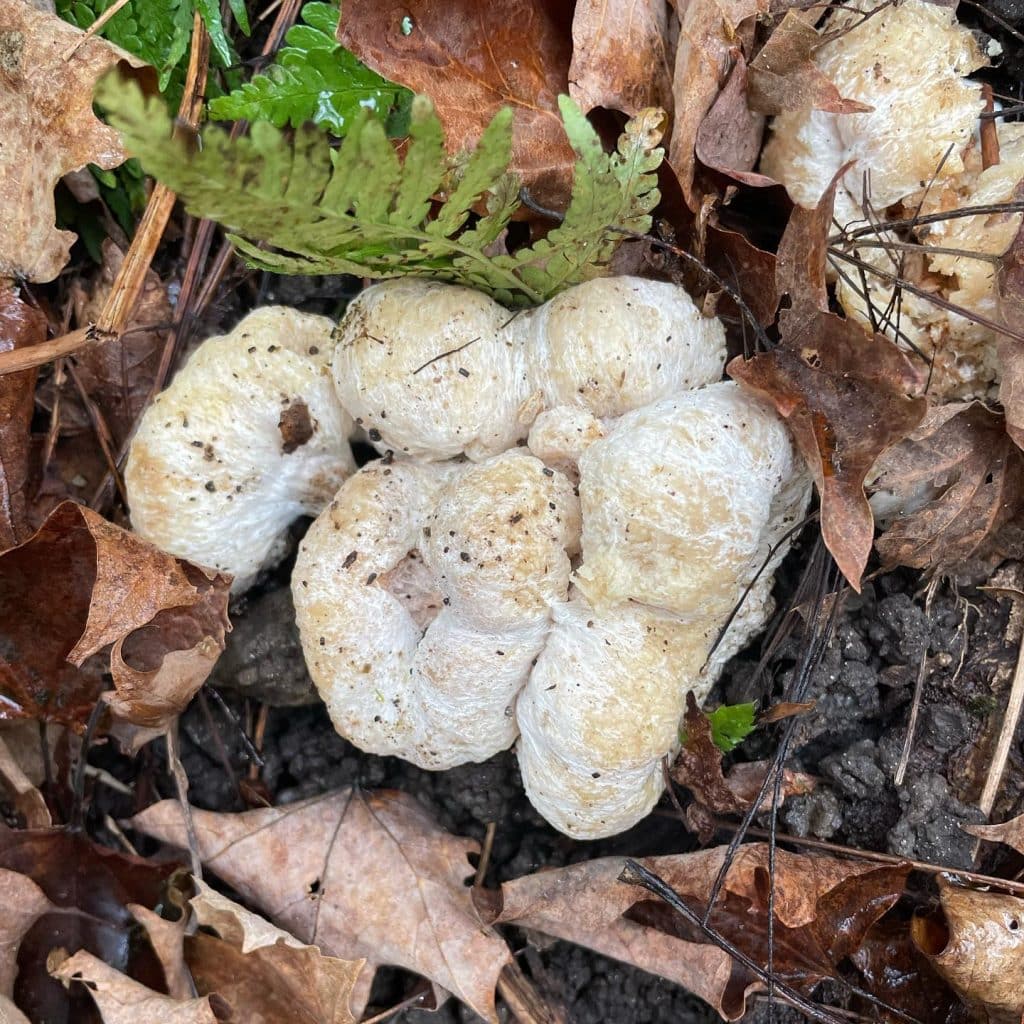
Shrimp of the Woods (Entoloma abortivum) is a unique looking mushroom that develops when an Entoloma fungus parasitizes a honey mushroom (Armillaria sp.). Shrimp of the woods can be found from September-November in decaying forest material. Shrimp of the woods have a folded, twisted, brain-like shape with a pink interior. They have no gills. The […]
Hypholoma lateritium – Brick Caps

Brick Caps (Hypholoma lateritium) are edible mushrooms that can be found on hardwood stumps and deadwood from August-November. They can be found throughout the United States but are most common in the Northeast. Brick caps grow in bouquet-like, dense, tight clusters. The cap has a brick red color in the center, fading to a lighter […]
Ganoderma applanatum – Artist’s Conk
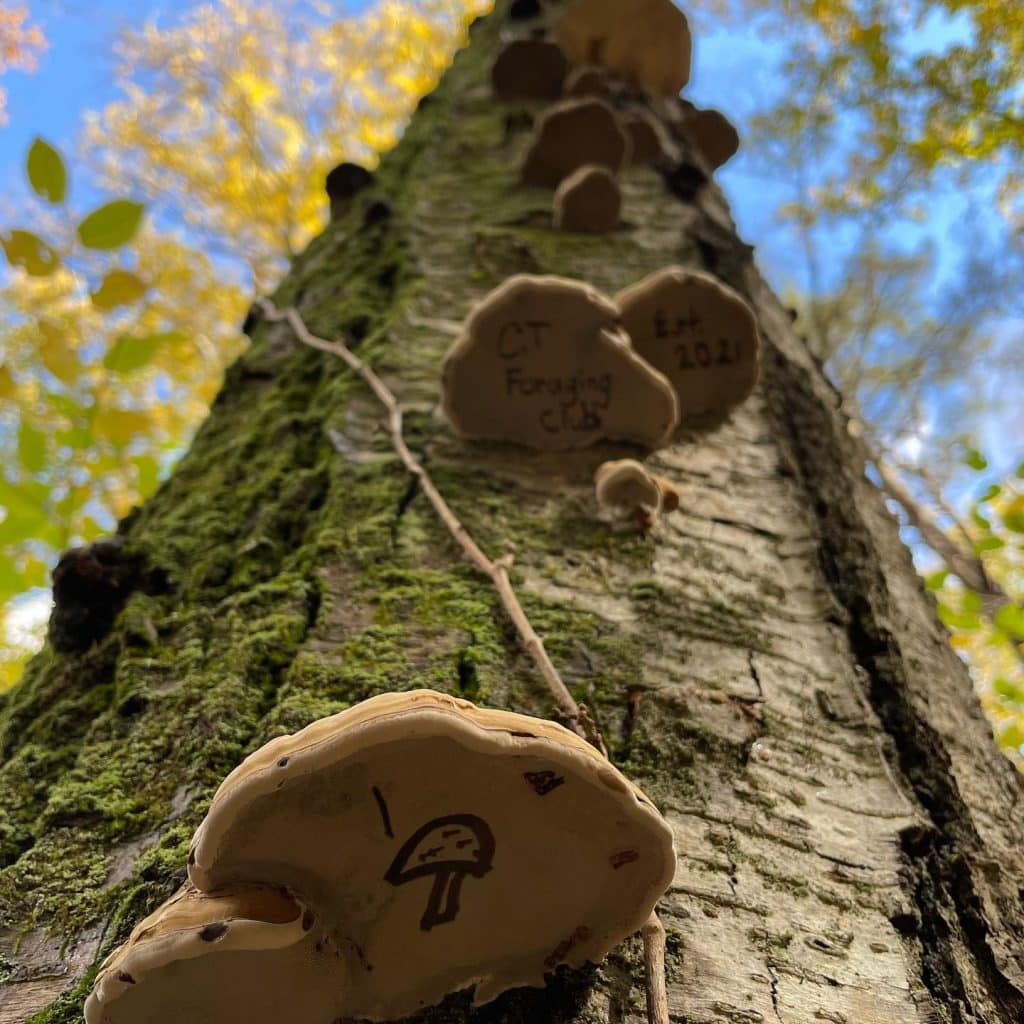
Artist’s Conk (Ganoderma applanatum) is a common mushroom that can be found worldwide. It can be found on living and dead trees, primarily hardwoods. Artist’s conk is both a parasitic and saprobic fungus. It is particularly known to decompose beech and poplar trees. Artist’s conks are perennial mushrooms that can grow up to 2 feet […]
Fomes fomentarius – Hoof Fungus

Hoof fungus (Fomes fomentarius) is one of the two mushrooms that was found with Otzi the iceman who lived 5,000 years ago in the Italian alps. Hoof fungus, also known as Tinder fungus, can be found growing on living and dead birch, beech, and sycamore trees. It is a perennial fungus, first emerging in the […]
Armillaria gallica – Bulbous Honey Mushroom
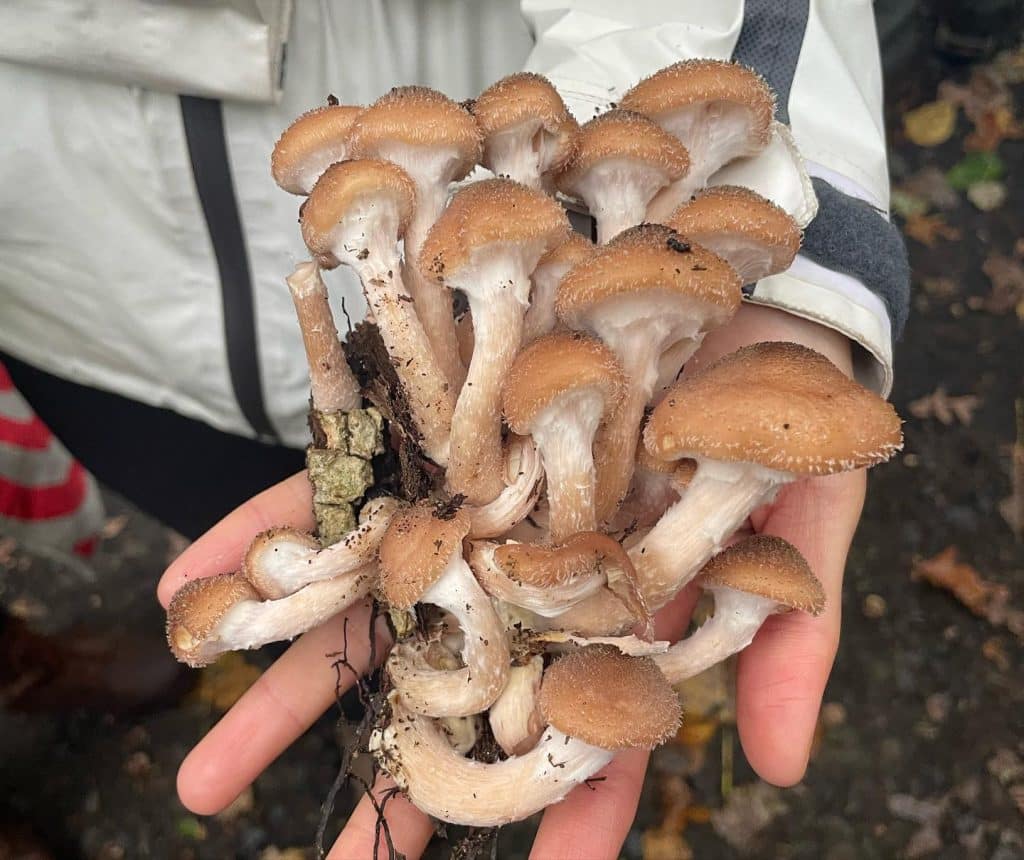
The Bulbous Honey Mushroom (Armillaria gallica) is a parasitic and saprobic mushroom that can be found July-November. Honey mushrooms will always be growing on wood, although sometimes the wood is buried. The mushrooms grow in clusters. Cap color varies from yellow to brown. Armillaria gallica tends to have more of a brown cap color, while […]
Clitocybe nuda – Wood Blewits
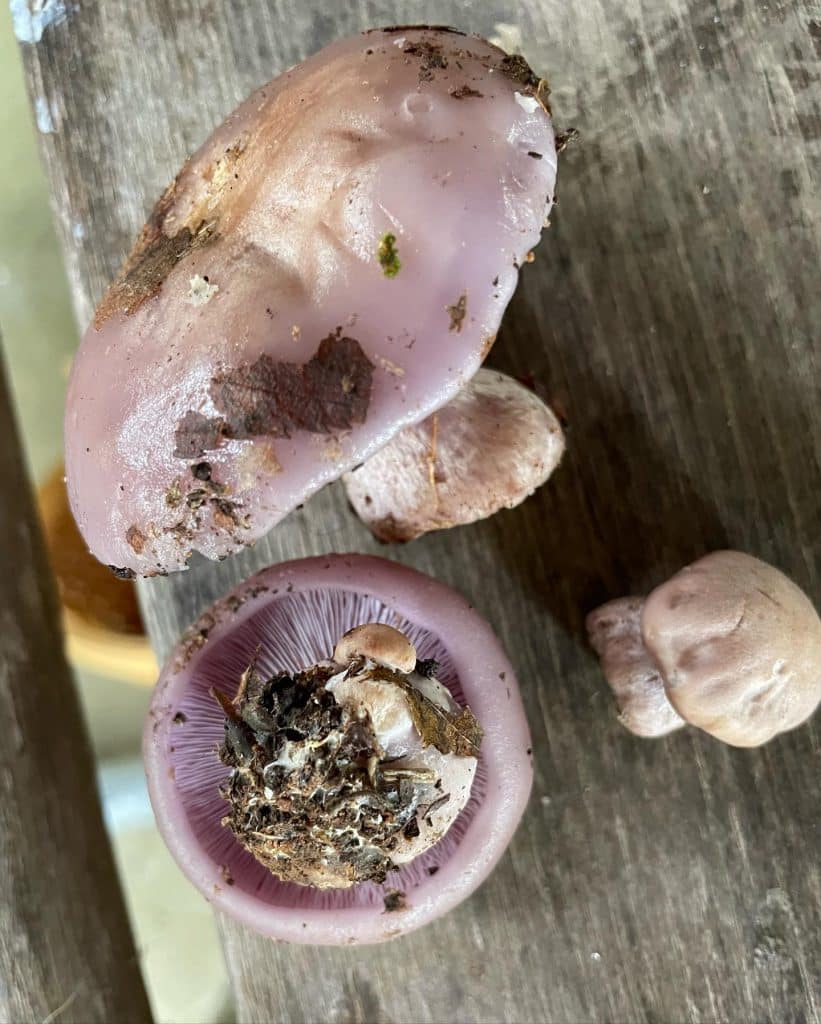
Wood Blewits (Clitocybe nuda) are edible mushrooms that can be found in compost heaps, wood chips, and leaf litter after heavy rains. The mushrooms can fruit multiple times per season from fall to early winter. Wood Blewits have suede-like caps that are purple when the mushroom is young, turning tan then white as it ages. […]
Pleurotus pulmonarius – Italian Oyster Mushrooms

Italian oyster mushrooms (Pleurotus pulmonarius) are edible oyster mushrooms that grow in New England from summer-fall. These mushrooms tend to be smaller and whiter than the Pearl Oyster mushroom (Pleurotus ostreatus) which prefers cooler weather. Oyster mushrooms are among the most cultivated and consumed edible mushrooms in the world. Oyster mushrooms are identified by their […]
Trametes betulina – Gilled Polypore

The Gilled Polypore (Trametes betulina) is a turkey tail (Trametes versicolor) look-alike with medicinal properties. The gilled polypore, also known as birch mazegill, is a unique polypore since it has gill-like ridges under its cap. The gilled polypore is a saprobic fungus which is most often found on decaying hardwood, although it can be occasionally […]
Lycoperdon pratense – Meadow Puffball
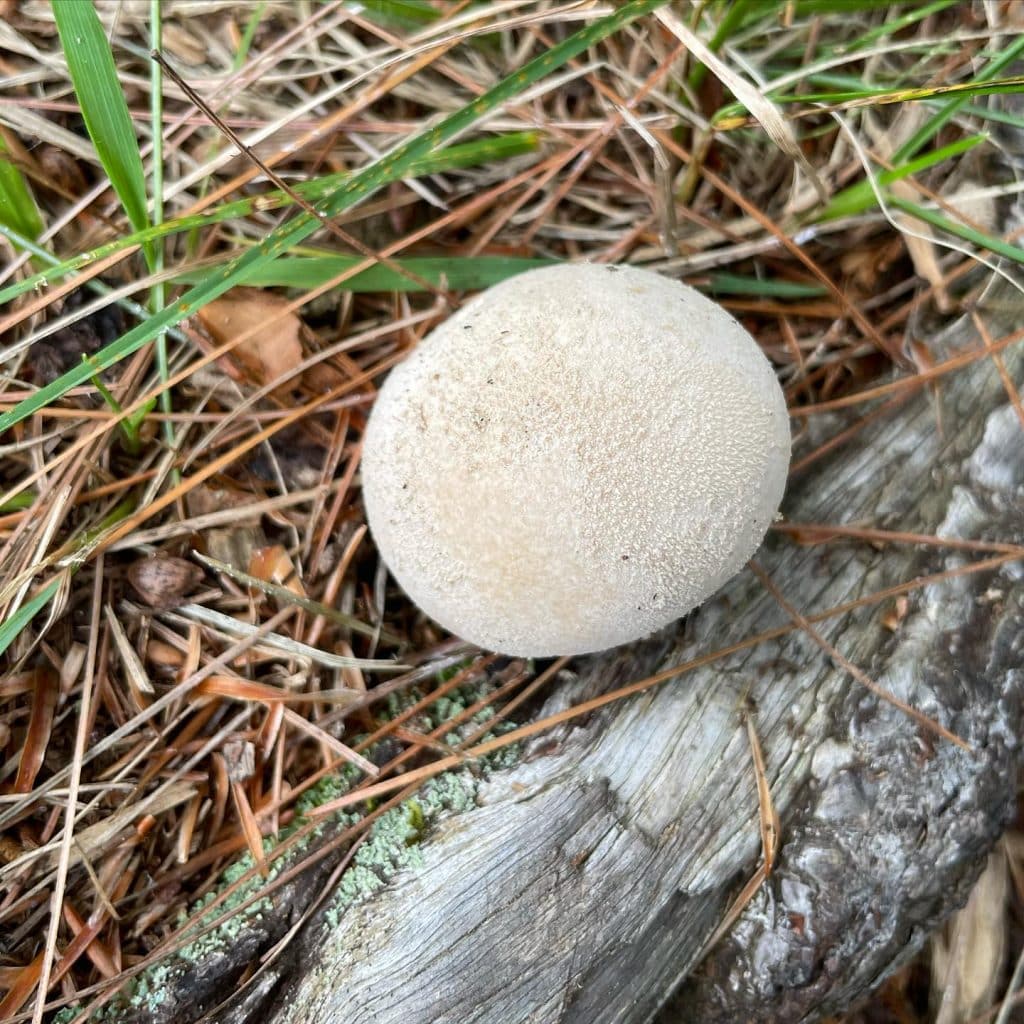
The Meadow Puffball (Lycoperdon pratense) is an edible puffball mushroom that can be found in lawns, meadows, and parks. Edible puffball mushrooms lack gills and are pure white inside. The meadow puffball has a stump-like stem, which differentiates it from the also edible Giant puffball (Calvatia gigantea) which lacks a stem. Once the interior […]
Grifola frondosa – Maitake
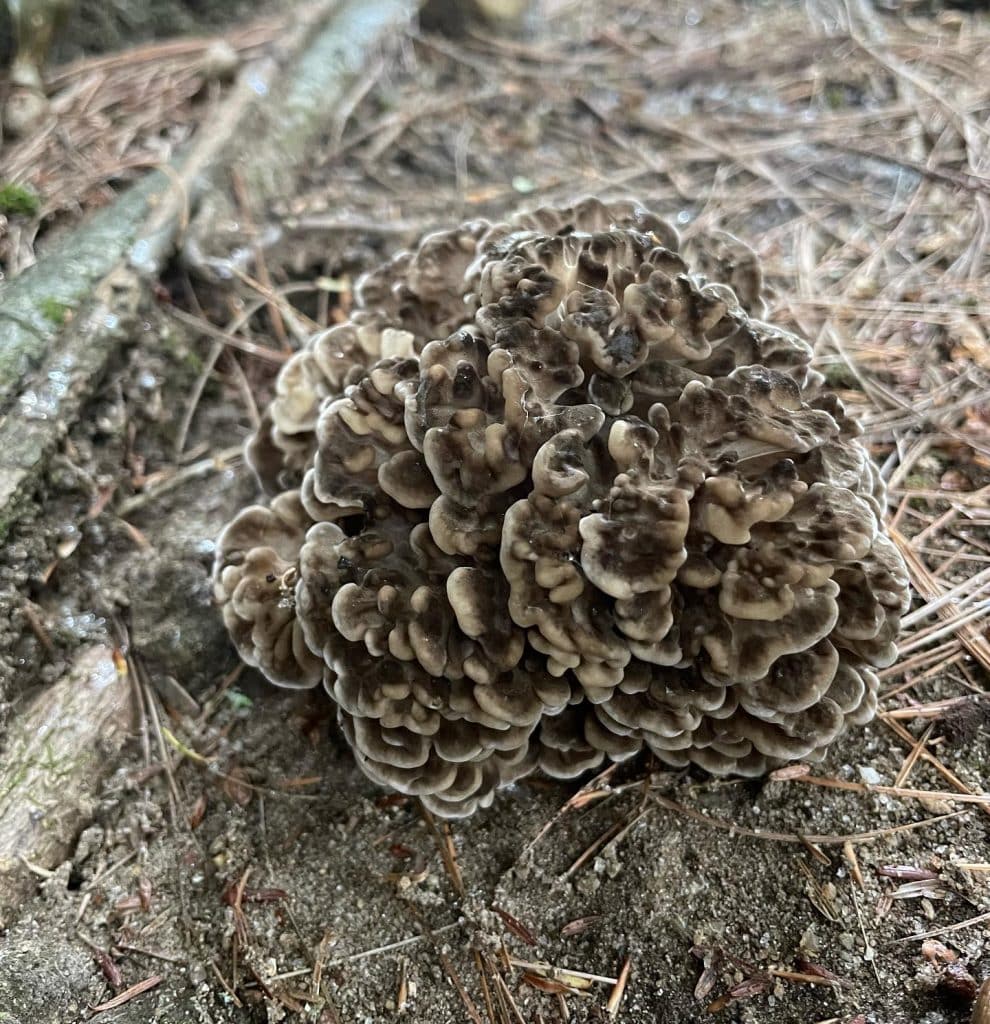
Maitake (Grifola frondosa) are choice edible and medicinal mushrooms that grow at the base of hardwood trees. 98% of the time they are growing at the base of oak trees. Maitake, also known as Hen of the Woods, can be found fruiting from late August to early November. They have gray or brownish caps and […]
Volvariella bombycina – Silky Sheath Mushroom

The Silky Sheath mushroom (Volvariella bombycina) is a rare, edible mushroom that fruits July-November. The Silky sheath can be found growing on hardwood logs or in wounds of standing hardwood trees. The mushroom grows out of a whitish to brownish cup at the base of the stem. The cap is silky white, yellowing with age. […]
Fomitopsis ochracea – American Brown Fomitopsis
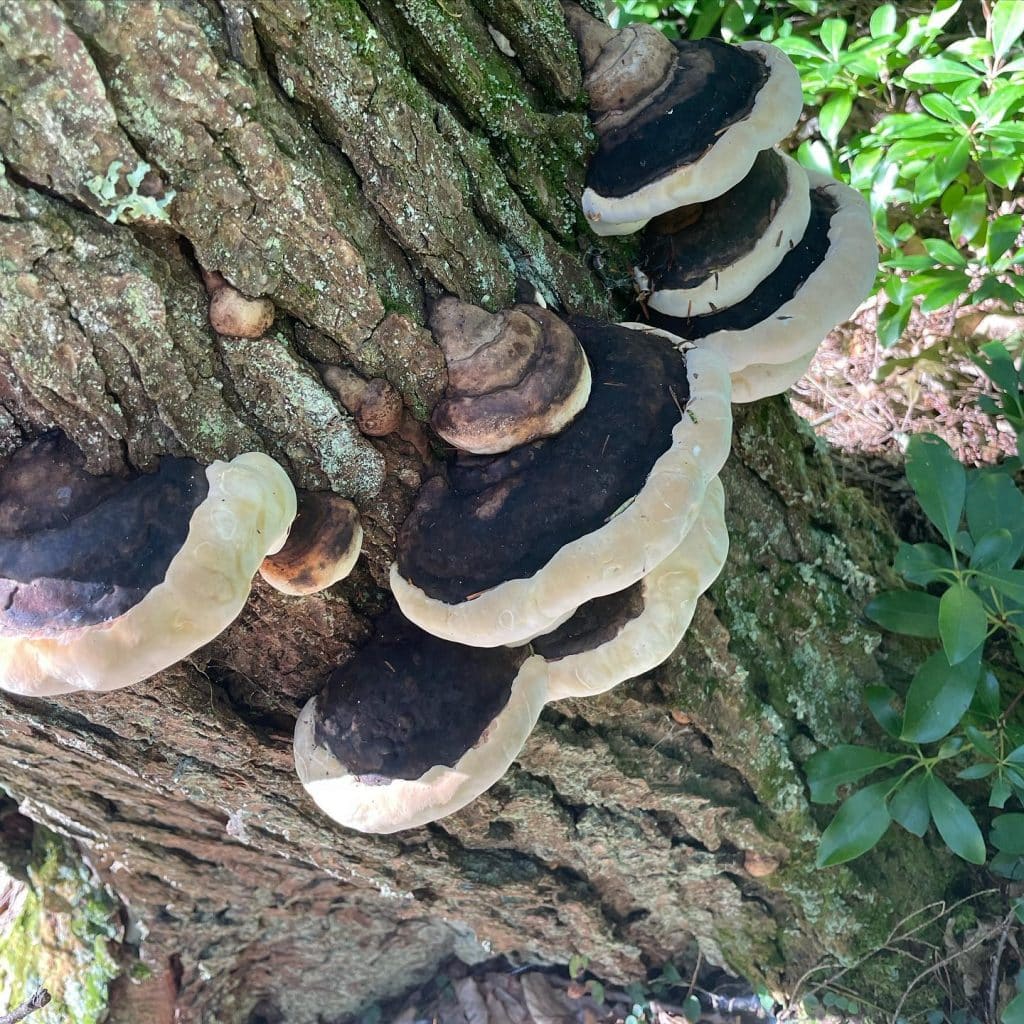
The American Brown Fomitopsis (Fomitopsis ochracea) is a polypore that was recently classified in 2011. Before this time, the mushroom was misidentified as multiple other mushroom species, including the Red-belted Polypore (Fomitopsis pinicola). The American brown Fomitopsis causes brown rot on hardwoods and conifers, particularly on birch and Populus species. The cap surface is smooth […]
Hericium coralloides – Coral Tooth Fungus
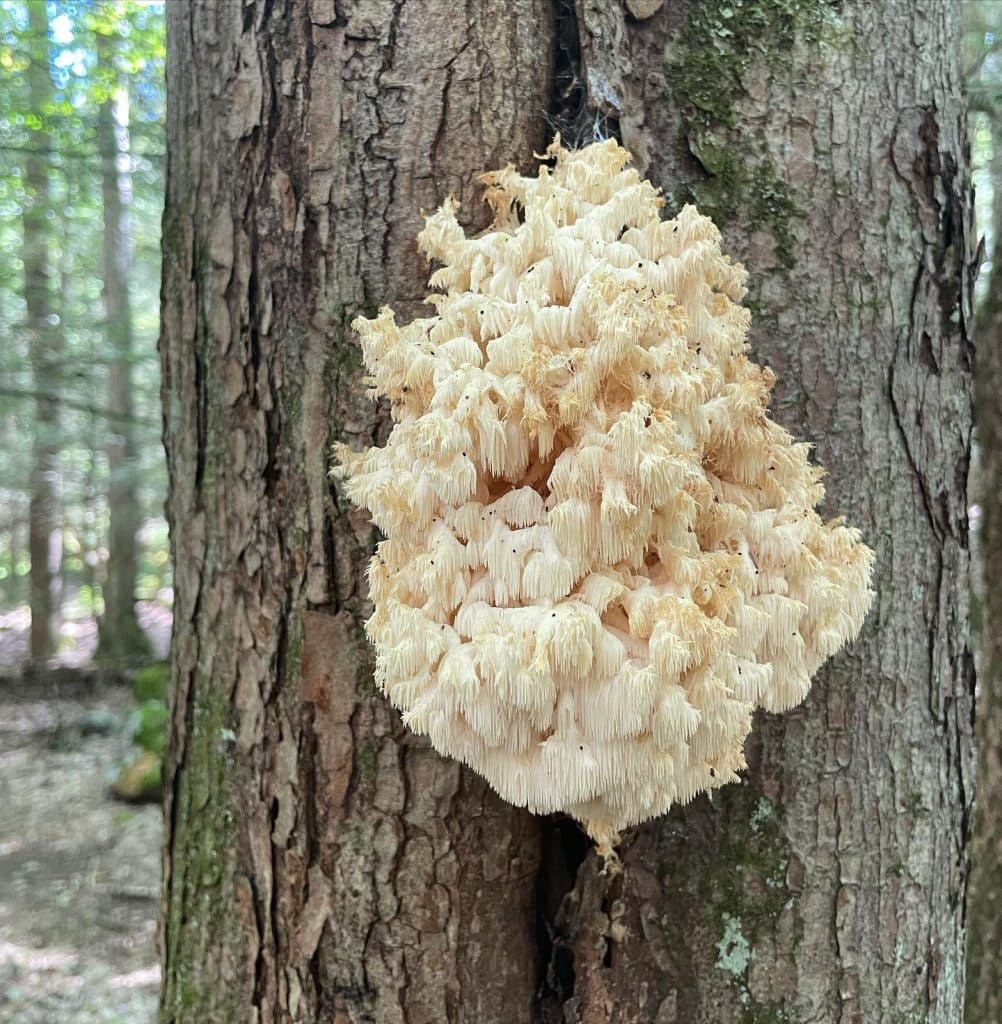
Coral Tooth Fungus (Hericium coralloides) is an edible mushroom that fruits late August to October. It can be found throughout North America and Europe, as well as in India, Russia, China, and Japan. Coral tooth fungus can be found growing on dead or decaying hardwoods, especially oak and beech. It is saprobic and possibly somewhat […]
Hohenbuehelia petaloides – Shoehorn Oyster
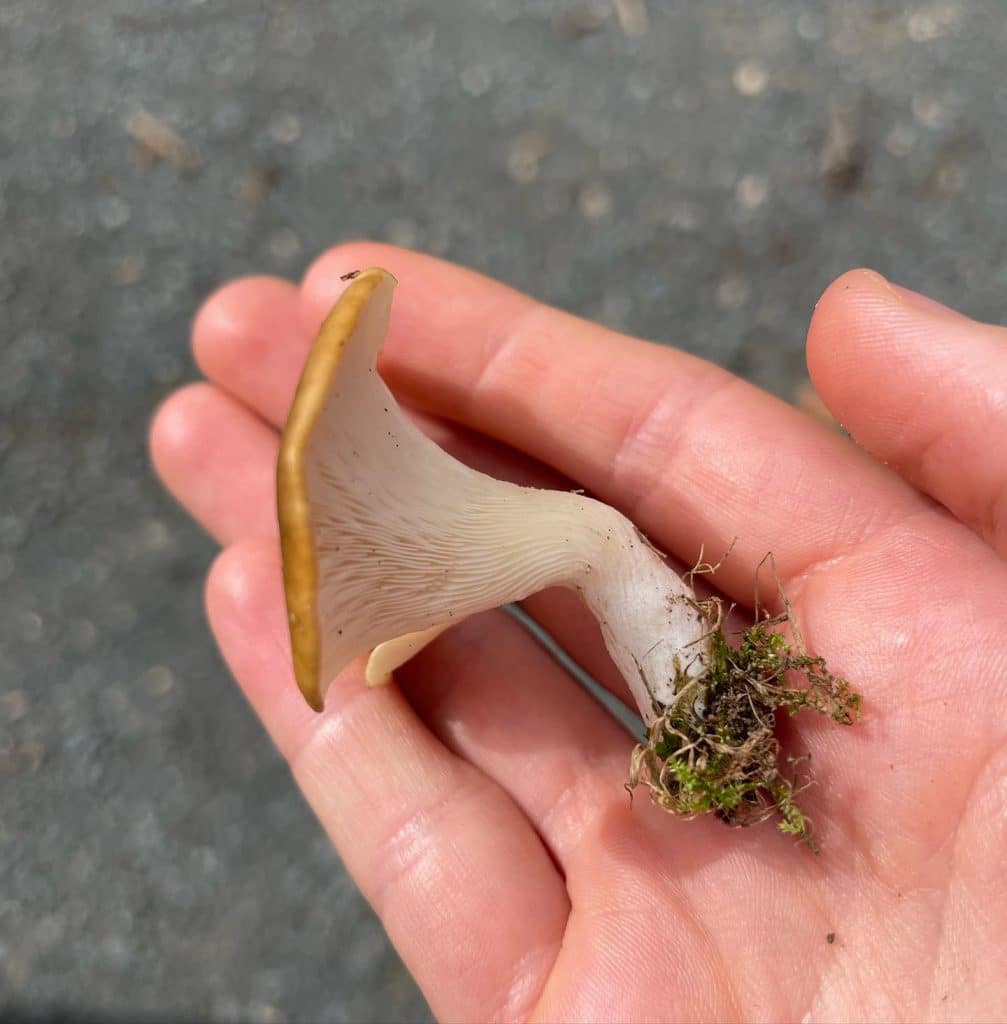
The Shoehorn oyster (Hohenbuehelia petaloides) is an oyster mushroom look-alike that can be found in New England summer-fall. Unlike true oyster mushrooms, the shoehorn oyster usually grows on wood chips or wood-rich soil. It can be found growing in clusters in urban settings or growing alone or in small groups in woodland settings. The shoehorn […]
Ganoderma curtisii – Golden Reishi
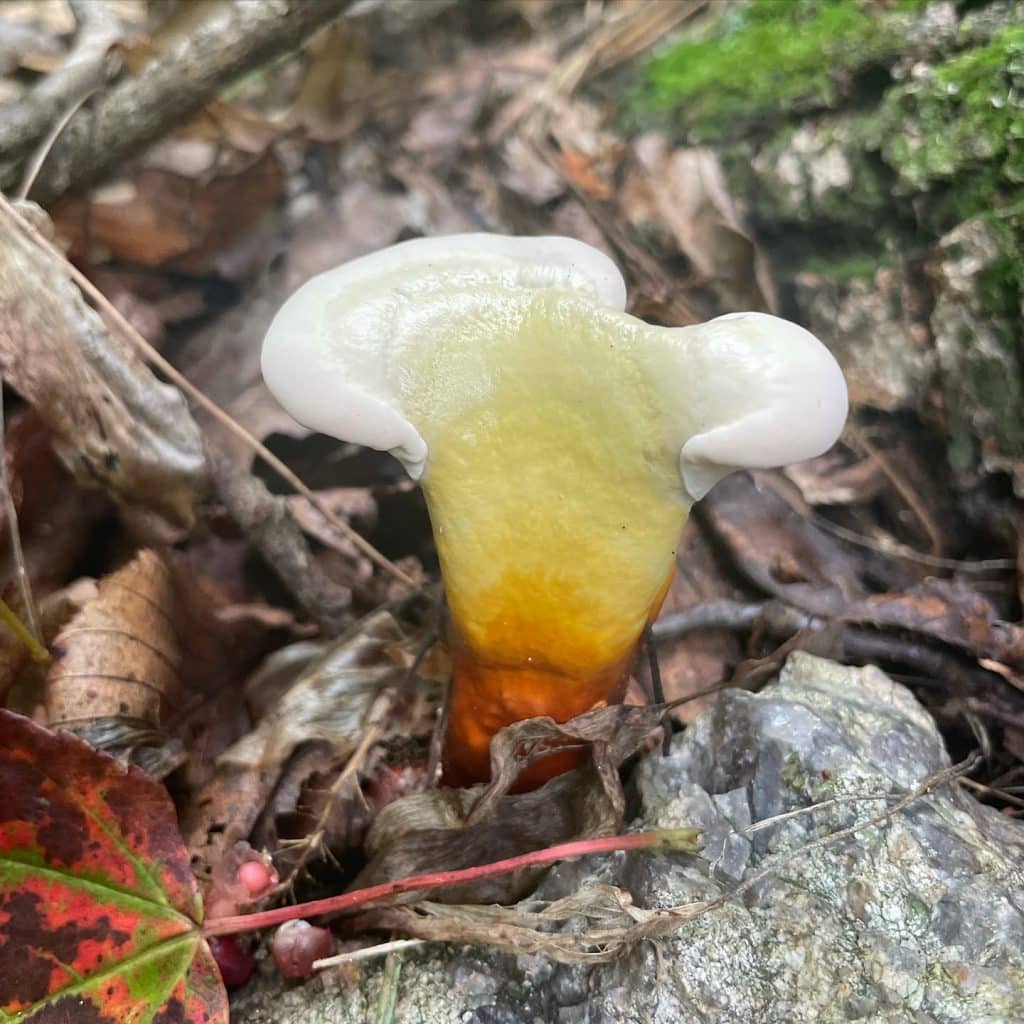
The Golden Reishi (Ganoderma curtisii) is a saprobic or parasitic mushroom. It can be found on living or dead hardwood trees east of the Rocky Mountains. The golden reishi fruits May-November. Ganoderma curtisii used to be classified as part of the Ganoderma lucidum complex. Ganoderma lucidum is now known to be a primarily European species, […]
Russula cyanoxantha – Charcoal Burner
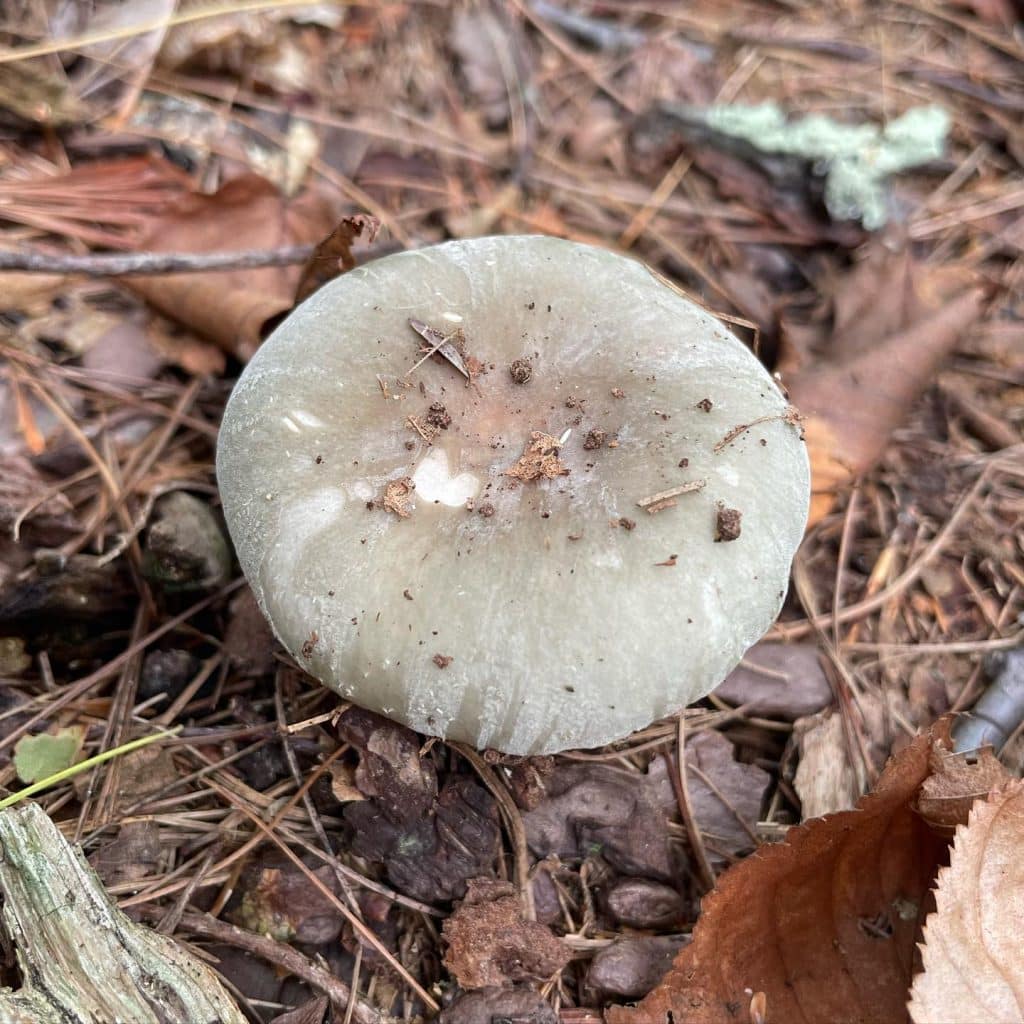
The Charcoal burner (Russula cyanoxantha) is an edible mushroom with a variable cap color. The cap color ranges from red and yellow to violet, blue-gray, and green. The charcoal burner can have mycorrhizal relationships with both conifers and deciduous trees but is most often found under beeches. It fruits summer-fall. The charcoal burner has soft […]
